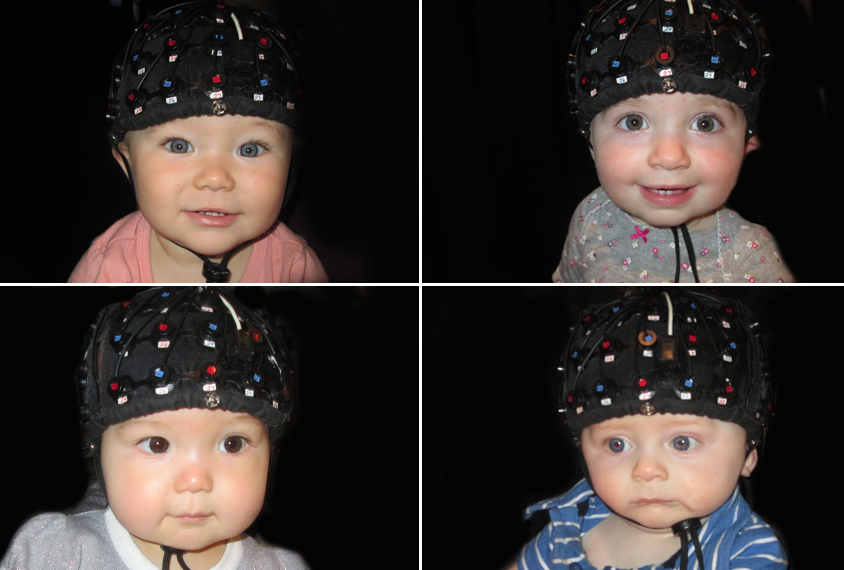
Heart rate may foretell autism features in infants
Babies with a family history of autism have heart rates that are unusually low and that respond aberrantly to speech sounds.
Babies with a family history of autism have heart rates that are unusually low and that respond aberrantly to speech sounds, according to a new study1.
If the findings are confirmed in larger studies, a low heart rate might indicate heightened risk of autism, says lead investigator Katherine Perdue, research associate at Boston Children’s Hospital. The results suggest that these babies also have impairments in attention to social cues such as speech.
Studies over the past two decades have shown that heart rate tracks with attention: An infant’s pulse slows briefly when she turns toward a compelling sight or sound and returns to baseline as she loses interest.
Heart rate slows less in response to sound in babies who have an older sibling with autism than it does in controls, the new study shows. These ‘baby sibs’ have a 20 times greater than average risk of autism. None of the children included in the study were later diagnosed with the condition, but they remain at high risk for other problems, such as delayed speech.
The findings, published 17 May in the Journal of Autism and Developmental Disorders, may partly explain the risk of language problems in baby sibs. If a baby is not attuned to speech, he could be missing out on opportunities for learning language, Perdue says. “It might not be autism per se, but it could be something that’s related to communication in some way.”
Even though the study did not include any babies with autism, the findings could still be relevant to the language and social difficulties characteristic of the condition, says Brandon Keehn, assistant professor of speech, language and hearing sciences at Purdue University in West Lafayette, Indiana, who was not involved in the study. “We make a binary distinction between later diagnosed and not diagnosed,” he says. “But the more we learn about the genetics of autism, the more we understand it’s along a continuum.”
Missing a beat:
Perdue and her colleagues assessed the heart rates of 40 baby sibs and 48 controls when the babies were 3, 6, 9 and 12 months old. Two years later, they evaluated the children for autism, and diagnosed 14 baby sibs with the condition. They excluded all of the children with autism from their analysis because the number was too small.
The researchers used a technique called functional near-infrared spectroscopy (fNIRS), in which a helmet-like device on a baby’s head detects blood oxygen levels as a proxy for brain activity. In 2014, Perdue’s team devised an algorithm to measure heart rate from fNIRS data2.
Using that algorithm on fNIRS data the researchers had collected previously, they found that the baby sibs had slower heartbeats than controls did at every age assessed. The result surprised the researchers because some children with autism are reported to have faster heart rates than average. Perdue says she cannot explain that discrepancy.
“This is a really elegant example of data mining,” Keehn says. “If you were analyzing fNIRS data to look at brain activation, this signal would be an artifact you’d remove from the analysis so that it wouldn’t confound the brain-related findings.”
The researchers then looked at how the heart rates changed from baseline as the babies listened to synthesized speech repeating syllables such as ‘ba’ and ‘lo’ for 16 seconds at a time. The team calculated the time between the babies’ heartbeats, called the inter-beat interval, before, while and after they heard the recordings. An increase in the interval reflects a decrease in heart rate.
Change of heart:
During the first four of eight trials involving each baby, the average inter-beat interval across all ages increased by about 3 milliseconds in response to speech in controls, and by about 1 millisecond in baby sibs. The difference between the two groups expanded with age.
“They seem to be decreasing their response to social stimuli over the first year of life,” Perdue says.
In the last four trials, the control babies showed little change in heart rate, suggesting that they had gotten used to the sounds and were no longer intrigued by them. However, in the baby sibs — particularly the boys — the inter-beat interval increased by about 1 to 2 milliseconds in response to the speech sounds.
“An increase might indicate that they’re finding the stimulus aversive in some way, that they’re getting just a little bit stressed by it,” Perdue says.
It is unclear why the baby sibs seem to attend less to speech. They may not be interested in speech, or their brains may have problems processing sounds, Perdue says.
Either way, if the findings hold up in babies who are later diagnosed with autism, heart rate could serve as an accessible biomarker for autism, Keehn says. “Heart rate is a pretty robust measure, relative to other metrics that you might use.”
The next step might be to assess whether the baby sibs’ atypical heart rate response is specific to syllables or also occurs with sounds that are not socially relevant, Keehn says. Researchers could also measure how heart rate varies with exposure to other stimuli, such as pictures of faces.
References:
Recommended reading
Explore more from The Transmitter

Cracking the neural code for emotional states



